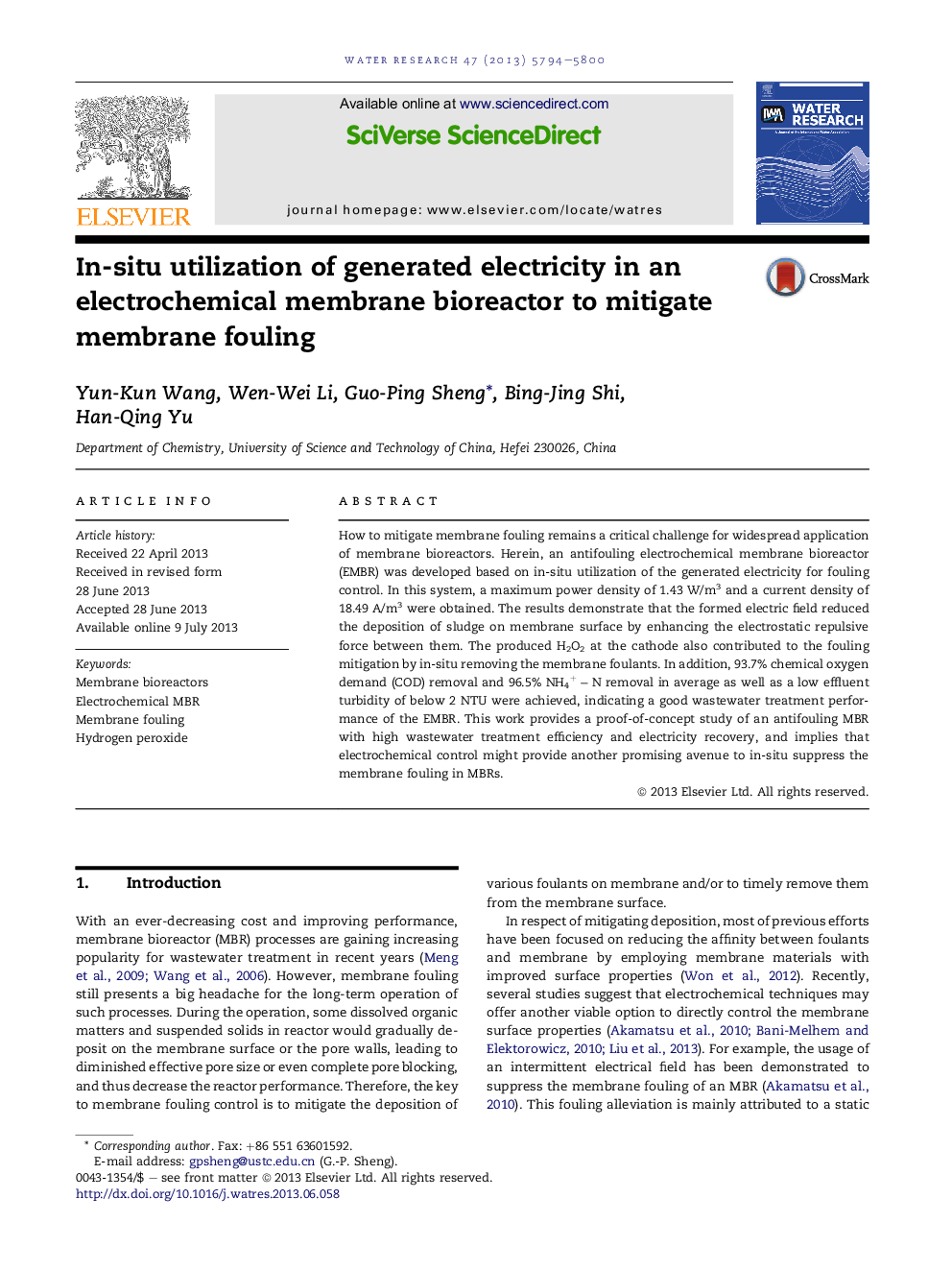| Article ID | Journal | Published Year | Pages | File Type |
|---|---|---|---|---|
| 6367503 | Water Research | 2013 | 7 Pages |
â¢An antifouling EMBR system was developed to mitigate membrane fouling.â¢The formed electric field reduces the deposition of sludge on membrane surface.â¢The produced H2O2 at the cathode contributed to the fouling mitigation.â¢It shows good performances in nutrient removal and electricity production.
How to mitigate membrane fouling remains a critical challenge for widespread application of membrane bioreactors. Herein, an antifouling electrochemical membrane bioreactor (EMBR) was developed based on in-situ utilization of the generated electricity for fouling control. In this system, a maximum power density of 1.43Â W/m3 and a current density of 18.49Â A/m3 were obtained. The results demonstrate that the formed electric field reduced the deposition of sludge on membrane surface by enhancing the electrostatic repulsive force between them. The produced H2O2 at the cathode also contributed to the fouling mitigation by in-situ removing the membrane foulants. In addition, 93.7% chemical oxygen demand (COD) removal and 96.5% NH4+-N removal in average as well as a low effluent turbidity of below 2 NTU were achieved, indicating a good wastewater treatment performance of the EMBR. This work provides a proof-of-concept study of an antifouling MBR with high wastewater treatment efficiency and electricity recovery, and implies that electrochemical control might provide another promising avenue to in-situ suppress the membrane fouling in MBRs.
Graphical abstractDownload high-res image (255KB)Download full-size image
